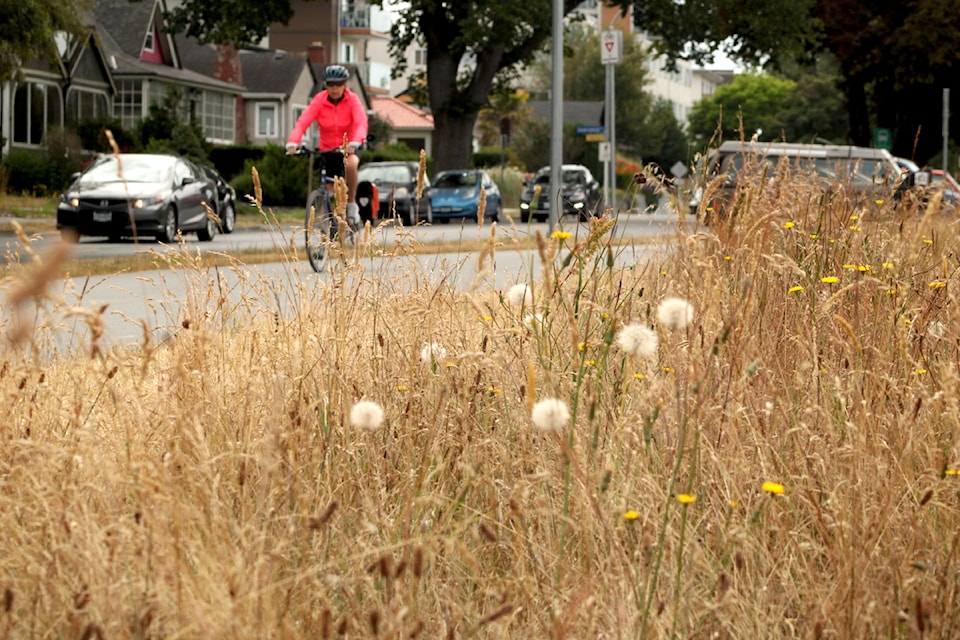While living in the core of James Bay for almost 30 years, Kirk Buhne has usually been able to rely on a cool nighttime breeze to provide relief from the heat during the summer.
But those cooling winds were nowhere to be found when the 2021 heat dome hit Victoria, and James Bay residents have also been cut off from the breeze during other heat waves where they've had to close their windows due to wildfire smoke.
That concerns Buhne because there's a lack of other cooling options in most of the homes in his neighbourhood, which has many older folks and low-income renters who are especially vulnerable to high temperatures.
“The fact is, most people in James Bay do not have air conditioning,” Buhne said in an interview.
His concern is backed up by a report released earlier this year that assessed heat vulnerability across the Capital Regional District (CRD). That report, paired with an interactive portal on extreme heat, found the populations of James Bay and Sidney are at a "very high" level of risk when temperatures climb to sweltering highs.
The heat vulnerability project included a socio-demographic index that highlights areas of the Capital Region where a greater proportion of residents are vulnerable to extreme heat events, due to factors like their age, income and health condition.
The index designates basically all of James Bay and Sidney as the highest level of risk, meaning the people living there are particularly vulnerable to illnesses like heatstroke, dehydration or heat-exhaustion. The report stated those two areas also stand out due to them having a significant proportion of buildings that are highly vulnerable to extreme heat.
Much of James Bay's housing being built before the mid-1970s has helped keep rents affordable for the neighbourhood's many older residents who are living on fixed incomes, Buhne said. But the James Bay Neighbourhood Association member says those aging buildings can get very hot – especially for those living on upper floors – and many aren't wired to handle the excess demand from air conditioners.
“There are a lot of people over 80 years old living in these apartment buildings and they’re going to be the ones most affected,” Buhne said, noting tenants on fixed incomes may be scared to speak out about heat over fears their landlord would respond by redeveloping the building or increasing rent to fund retrofits.
He emphasized that, given the neighbourhood's vulnerabilities, even one extreme heat event a year can have an impact on James Bay. A death review panel convened by the B.C. Coroners Service found more than 600 people – including 24 from Greater Victoria – died due to the 2021 heat dome. Ninety per cent of those who died were over the age of 60, the review found.
The Town of Sidney told Black Press Media it developed a heat response plan in recent years that focuses on offering relief to those most at risk. The town has identified at-risk buildings and said it will contact the occupants of those properties during extreme heat events to provide guidance on how to stay safe.
Sidney will also extend the hours of its spray parks during heat events, will soon have a water fill station installed at the waterfront public bathrooms and updated its bylaws to support residents who want to equip their homes with heat pumps, a Sidney spokesperson said.
The town has also fostered deals with air-conditioned spaces, like the SHOAL Centre, that will serve as cooling stations when needed. Victoria has been opening cooling centres on hot days in recent years and its website includes a map directing people to air-conditioned public buildings where people can find relief from the heat, which in James Bay include the New Horizons centre and the library.
Buhne said James Bay still lacks enough of those publicly accessible air-conditioned spots, so he hopes the city will provide the neighbourhood another place people can congregate during extreme heat events or other disasters.
“If we have a heat dome this year, we’re not really prepared for it,” he said. “We need better community spaces where people can use as places of refuge, we don’t have that in James Bay."
Using natural ways to mitigate heat is also top of mind for him as the resident recalls writing to Victoria's then-mayor 25 years ago with concerns about dead municipal trees not being replaced.
Victoria's tree canopy sits at 29 per cent, according to the city, which is working on identifying spots to plant new trees through its urban forest plan. The city also brought in a tree protection bylaw in 2021.
Buhne received a free sapling from the city for his own yard. But as James Bay continues to be an attractive spot for new development, he worries the limited soil volumes on top of underground parking garages will prevent large boulevard trees.
As other cities try new ideas, like painting roads lighter colours, Buhne hopes council heeds the calls from city planners who are keeping heat in mind as the city grows.
“When we have heat events, we’re vulnerable, yet most of the year, it’s too cool. So we’ve got a crux but there are ways to plan for that."



